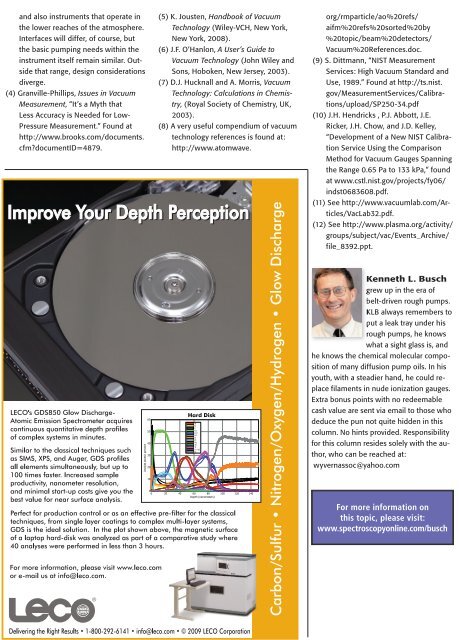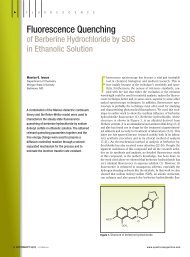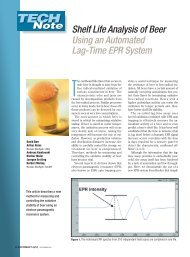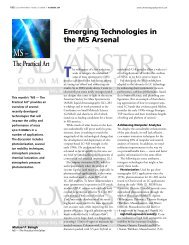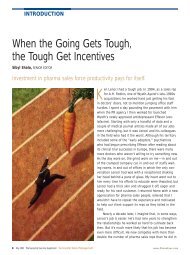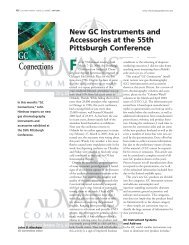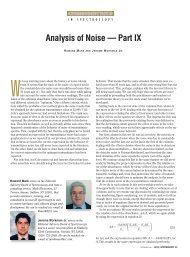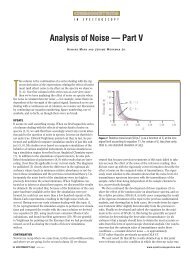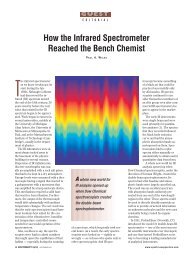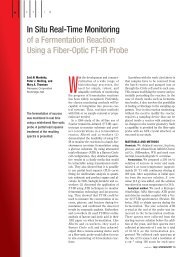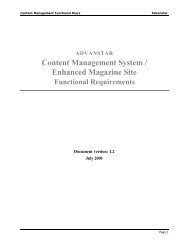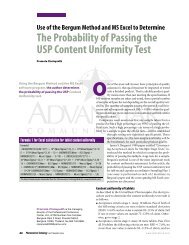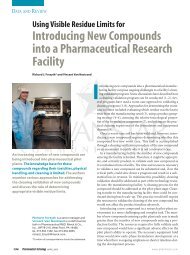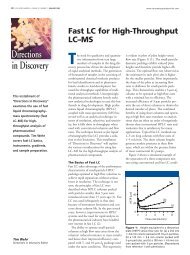Nucleic Acid Analysis with UV-vis and NMR - Spectroscopy
Nucleic Acid Analysis with UV-vis and NMR - Spectroscopy
Nucleic Acid Analysis with UV-vis and NMR - Spectroscopy
Create successful ePaper yourself
Turn your PDF publications into a flip-book with our unique Google optimized e-Paper software.
22 <strong>Spectroscopy</strong> 24(11) November 2009 www.spectroscopyonline.com<br />
<strong>and</strong> also instruments that operate in<br />
the lower reaches of the atmosphere.<br />
Interfaces will differ, of course, but<br />
the basic pumping needs <strong>with</strong>in the<br />
instrument itself remain similar. Outside<br />
that range, design considerations<br />
diverge.<br />
(4) Granville-Phillips, Issues in Vacuum<br />
Measurement, “It’s a Myth that<br />
Less Accuracy is Needed for Low-<br />
Pressure Measurement.” Found at<br />
http://www.brooks.com/documents.<br />
cfm?documentID=4879.<br />
(5) K. Jousten, H<strong>and</strong>book of Vacuum<br />
Technology (Wiley-VCH, New York,<br />
New York, 2008).<br />
(6) J.F. O’Hanlon, A User’s Guide to<br />
Vacuum Technology (John Wiley <strong>and</strong><br />
Sons, Hoboken, New Jersey, 2003).<br />
(7) D.J. Hucknall <strong>and</strong> A. Morris, Vacuum<br />
Technology: Calculations in Chemistry,<br />
(Royal Society of Chemistry, UK,<br />
2003).<br />
(8) A very useful compendium of vacuum<br />
technology references is found at:<br />
http://www.atomwave.<br />
org/rmparticle/ao%20refs/<br />
aifm%20refs%20sorted%20by<br />
%20topic/beam%20detectors/<br />
Vacuum%20References.doc.<br />
(9) S. Dittmann, “NIST Measurement<br />
Services: High Vacuum St<strong>and</strong>ard <strong>and</strong><br />
Use, 1989.” Found at http://ts.nist.<br />
gov/MeasurementServices/Calibrations/upload/SP250-34.pdf<br />
(10) J.H. Hendricks , P.J. Abbott, J.E.<br />
Ricker, J.H. Chow, <strong>and</strong> J.D. Kelley,<br />
“Development of a New NIST Calibration<br />
Service Using the Comparison<br />
Method for Vacuum Gauges Spanning<br />
the Range 0.65 Pa to 133 kPa,” found<br />
at www.cstl.nist.gov/projects/fy06/<br />
indst0683608.pdf.<br />
(11) See http://www.vacuumlab.com/Articles/VacLab32.pdf.<br />
(12) See http://www.plasma.org/activity/<br />
groups/subject/vac/Events_Archive/<br />
file_8392.ppt.<br />
Kenneth L. Busch<br />
grew up in the era of<br />
belt-driven rough pumps.<br />
KLB always remembers to<br />
put a leak tray under his<br />
rough pumps, he knows<br />
what a sight glass is, <strong>and</strong><br />
he knows the chemical molecular composition<br />
of many diffusion pump oils. In his<br />
youth, <strong>with</strong> a steadier h<strong>and</strong>, he could replace<br />
filaments in nude ionization gauges.<br />
Extra bonus points <strong>with</strong> no redeemable<br />
cash value are sent via email to those who<br />
deduce the pun not quite hidden in this<br />
column. No hints provided. Responsibility<br />
for this column resides solely <strong>with</strong> the author,<br />
who can be reached at:<br />
wyvernassoc@yahoo.com<br />
For more information on<br />
this topic, please <strong>vis</strong>it:<br />
www.spectroscopyonline.com/busch


